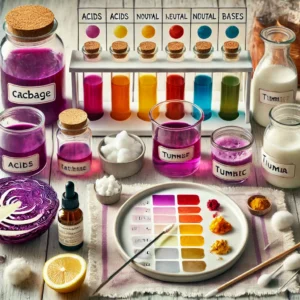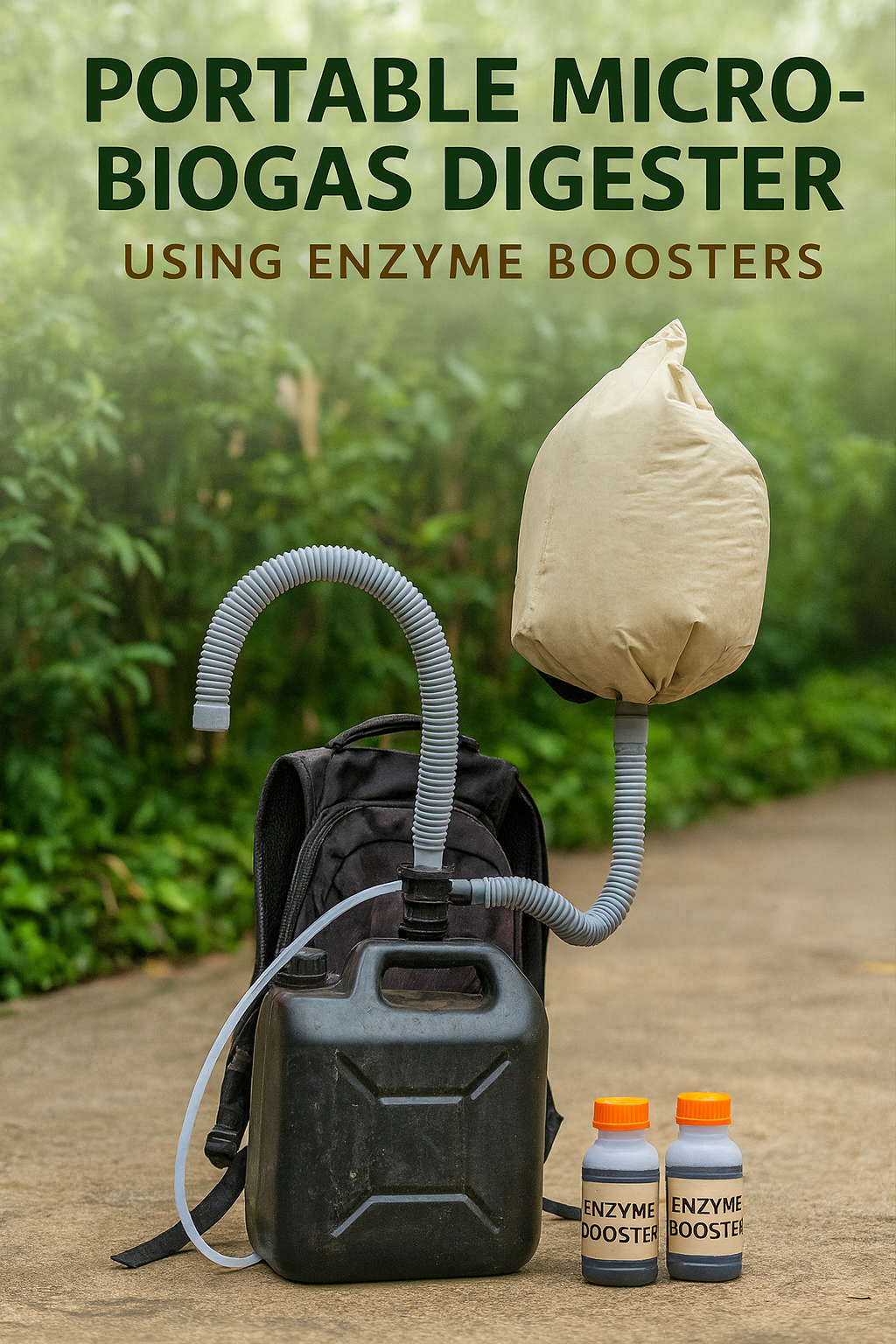ABSTRACT
Theproject explores how natural indicators can be used to test the pH of household substances, with a focus on red cabbage and turmeric. The goal is to extract pigments from these natural sources, which change color in response to different pH levels, and then test various household items to determine their acidity or alkalinity. Red cabbage contains anthocyanins, which are sensitive to pH changes, while turmeric contains curcumin, which changes color in basic solutions. Results demonstrated that red cabbage produces a range of colors across the pH spectrum, making it an effective pH indicator, whereas turmeric is mainly effective in detecting bases. This experiment illustrates a simple, eco-friendly way to conduct pH testing.
Introduction
The pH scale measures how acidic or basic a substance is, ranging from 0 (strongly acidic) to 14 (strongly basic), with 7 as neutral. Typically, pH is measured using litmus paper or electronic pH meters. However, certain natural substances contain pigments that also respond to pH changes, offering an accessible, sustainable way to create pH indicators. Red cabbage contains anthocyanins, which change color in different pH environments, while turmeric contains curcumin, which shifts color in alkaline solutions. This project investigates whether red cabbage and turmeric can effectively test the pH of various household items.
Materials
- Red cabbage (fresh, about 1/4 head)
- Turmeric powder (about 1 tablespoon)
- Household substances for testing (e.g., vinegar, baking soda, lemon juice, milk, soap, water, etc.)
- Distilled water (for consistency in indicator preparation)
- Blender or knife (for red cabbage extraction)
- Filter paper or coffee filters
- Two small bowls or jars
- Droppers or cotton swabs
- White paper or plate (to observe color changes clearly)
Procedure
Part 1: Preparing the Indicators
- Red Cabbage Indicator:
- Chop the red cabbage into small pieces.
- Place the chopped cabbage into a blender with a small amount of distilled water (just enough to cover the cabbage) and blend until smooth.
- Strain the cabbage mixture through a filter paper or coffee filter to extract the juice, which will serve as the pH indicator.
- Pour the cabbage juice into a jar or bowl.
- Turmeric Indicator:
- Mix one tablespoon of turmeric powder with a small amount of distilled water to create a paste.
- Strain the mixture if needed, collecting the liquid portion as the turmeric indicator.
- Pour the turmeric indicator into a separate bowl or jar.
Part 2: Testing Household Substances
- Label each substance you plan to test and pour small amounts into individual containers.
- Using a dropper or cotton swab, add a few drops of the red cabbage indicator to each test substance and observe any color change.
- Record the color for each substance. The color spectrum generally ranges from pink/red (acidic) to blue/green (neutral) to yellow/green (basic).
- Repeat the test with the turmeric indicator, noting that turmeric primarily changes color in basic solutions (yellow in neutral/acidic and reddish-brown in basic solutions).
Part 3: Recording Results
- Document the initial color of each indicator.
- Record the observed color change for each test substance and infer the approximate pH level (e.g., acidic, neutral, or basic) based on the color chart.
Results
| Substance | Color with Red Cabbage | Inferred pH | Color with Turmeric | Inferred pH |
|---|---|---|---|---|
| Vinegar | Pink | Acidic (pH ~3) | Yellow | Acidic |
| Baking Soda | Greenish-blue | Basic (pH ~9) | Reddish-brown | Basic |
| Lemon Juice | Pink | Acidic (pH ~2) | Yellow | Acidic |
| Soap Solution | Green | Basic (pH ~8-10) | Reddish-brown | Basic |
| Distilled Water | Purple | Neutral (pH ~7) | Yellow | Neutral |
The red cabbage indicator showed a clear color progression from pink in acidic solutions to green and yellow in basic solutions. Turmeric provided limited results, mainly indicating a color change to reddish-brown in basic solutions.
Conclusion
The experiment successfully demonstrated that natural indicators, specifically red cabbage, are effective for pH testing across a range of household substances. The anthocyanins in red cabbage reacted visibly across the pH spectrum, displaying various colors that made it easy to distinguish between acidic, neutral, and basic substances. While turmeric was less versatile, it reliably indicated basic solutions, turning reddish-brown in their presence. This project illustrates that natural dyes provide an eco-friendly, accessible alternative for pH testing, with applications in education and low-cost testing methods. Future studies could explore other plant-based indicators for a broader range of pH sensitivity.







Aw, this was a very nice post. In idea I want to put in writing like this moreover ?taking time and actual effort to make a very good article?but what can I say?I procrastinate alot and not at all appear to get something done.
WONDERFUL Post.thanks for share..more wait .. ?
thanks
Yet another thing is that when evaluating a good online electronics store, look for web stores that are frequently updated, keeping up-to-date with the most recent products, the very best deals, and helpful information on product or service. This will ensure that you are doing business with a shop that stays over the competition and gives you what you ought to make intelligent, well-informed electronics buys. Thanks for the critical tips I’ve learned from the blog.